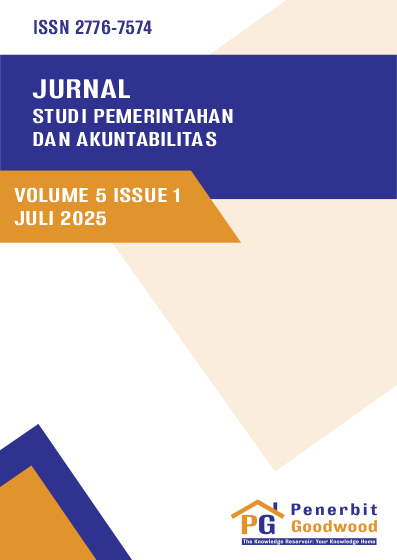Implementasi Peran Kepala Distrik dalam Penyelenggaraan Pemerintahan Umum
Abstract:
Purpose: This research examines how District Heads implement their roles in public administration, with a specific focus on Wanggar District in Nabire Regency, Central Papua Province. The study addresses gaps in understanding local governance dynamics within Papua’s distinctive socio-cultural context.
Research Methodology: A qualitative case study was employed, drawing data from ten purposively selected informants through semi-structured interviews and direct field observations at the District Office. Data analysis followed Miles and Huberman’s interactive model, including data reduction, display, and conclusion verification.
Results: The findings identified six main functions: (1) national awareness development through seminars with limited community participation, (2) unity promotion via annual meetings with restricted representation, (3) inter-ethnic and interfaith harmony maintenance concentrated on religious festivities, (4) social conflict resolution addressing land disputes, domestic issues, and community disagreements, (5) administrative services considered slow and ineffective by residents, and (6) community economic development hindered by limited financial support.
Conclusions: Despite evident commitment across administrative, social, and developmental roles, effectiveness is hampered by resource constraints, low public involvement, and bureaucratic inefficiencies. Strengthening institutional capacity and promoting participatory governance are crucial for improving district-level administration.
Limitations: The single-district focus and limited number of respondents restrict the generalizability of findings across Papua’s diverse districts.
Contribution: This study enriches local governance scholarship in Papua by highlighting the gap between the formal responsibilities of District Heads and their practical implementation, documenting operational challenges in resource-limited contexts.
Downloads

This work is licensed under a Creative Commons Attribution-ShareAlike 4.0 International License.


